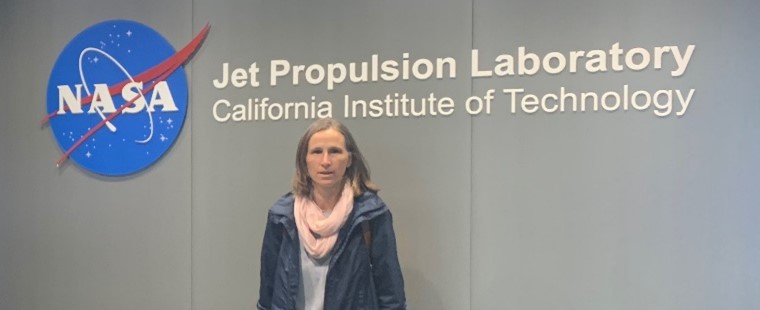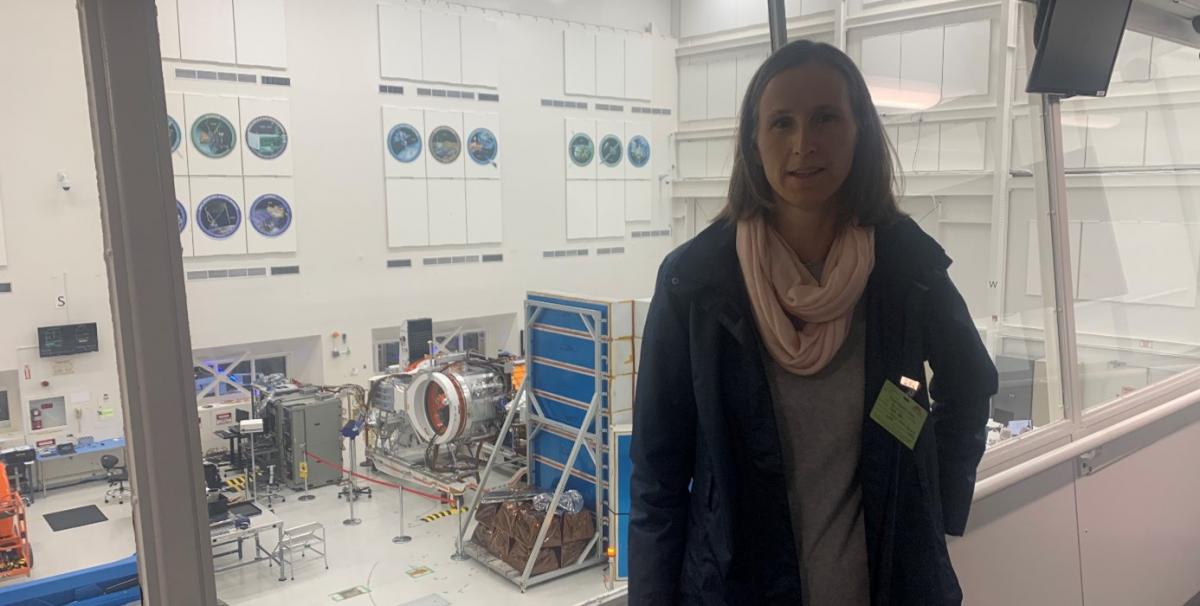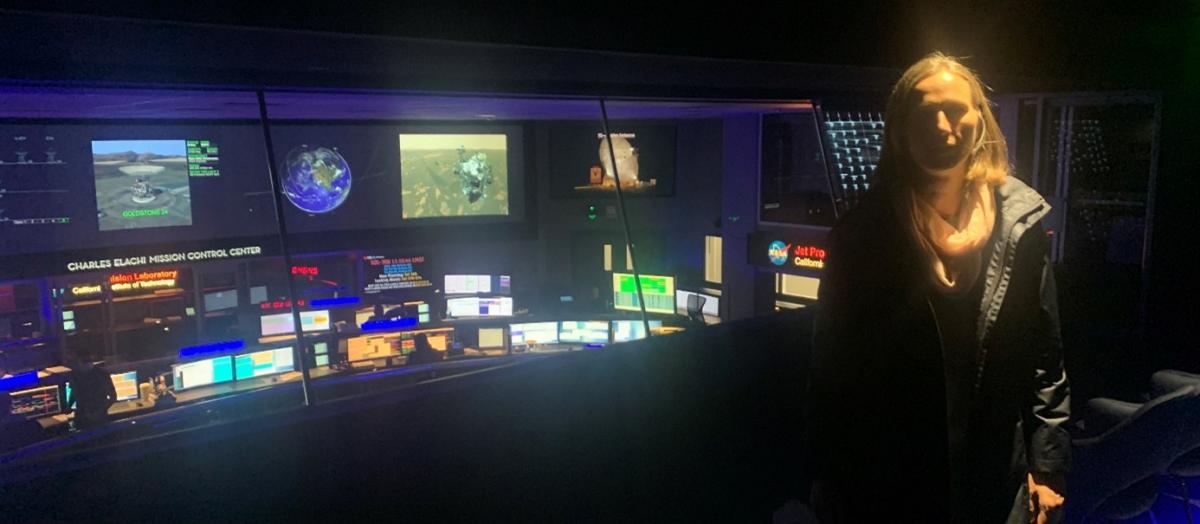2023. January 13.
NASA Jet Propulsion Labortary
The first director of the NASA, Jet Propulsion Laboratory (JPL), in Pasadena, USA was Theodor von Karman (Kármán Tódor) a graduate of BME in the early 1900’.
JPL operated by Caltech for NASA, announces new scientific or engineering world sensations every year. Zsófia Kugler associate professor at the Faculty of Civil Engineering, BME, director of the Knowledge Center for Water Science and Disaster Prevention spent half year as a Fulbright Visiting Scholar at the institute founded by the world-famous scientist of Hungarian origin. Today, the institute is one of the world's leading space industry and science centers.

The Fulbright scholarship is a prestigious, long-standing American educational and research exchange program. How can you win such a scholarships of excellence?
A few years ago I published a joint article with two American colleagues in the peer-reviewed international journal Remote Sensing. Based on the article, we submitted a NASA ROSES project proposal together with me as collaborator. Unfortunately, the proposal did not get funded, thus submitting an individual Fulbright application was an obvious step forward. Students, lecturers or researchers can submit a study or research application to a US host institution. During the selection interview I convinced the committee of the relevance and importance of our research, and my application got funded by the prestigious Fulbright scholarship of the US State Department. From February 2022, I worked as a visiting scientist at NASA's Jet Propulsion Laboratory (JPL) for half a year. After receiving the grant, the Fulbright office and community provided tremendous help in organizing the trip. I am not only grateful for their financial support, but also for their unwavering help in preparing for the trip, which made everything go smoothly and well-organized. After return, our collaboration with colleagues at JPL has remained close. In addition, as a Fulbright Alumni member we had the chance to join an inspiring and outstanding community, we became participants in many interesting programs back home. As they say: Once a Fulbrighter always a Fulbrighter.
What research project did you work at JPL?
For nearly a decade, we have been analyzing passive microwave satellite data to deliver river flow measurements at various locations around the Globe. Our satellite measurements cover 5 continents and nearly 2,000 river reaches worldwide, providing our users with daily river gauge measurements. We first started to develop this monitoring system from high-frequency microwave satellite data, then with time seeing the advantages we turned our focus to lower-frequency instruments. For years we have been collecting measurements with the European Space Agency's ESA low-frequency SMOS satellite sensor. During the six months at JPL we obtained and analyzed data of the institute’s SMAP sensor, determining the set of parameters that optimizes the noise/signal ratio of the observation. This is how we finally arrived at the comparison of data series from the European and the American satellites. JPL's outstanding results and breathtaking innovations are often making the headlines. However, becoming part of a sensational team and experiencing it first hand was a life changing experience. Impressive, inspiring and innovative.

Will the relationship and this research domain remain in the future?
Of course, after return this valuable international cooperation is still remaining active, and the research work is promising many interesting results in the future. We already plan to integrate data from SWOT satellite, which has been launched in December 2022. Both the European and American satellite hydrology community is in SWOT excitement, eagerly waiting for the missions first outputs. The satellite measures water levels and water surface elevation gradients over river reaches with brand new RADAR interferometric technology. The latter has typically been used for terrestrial elevation measurements in the past but never to measure water surface. No surprise that JPL has once again come up with a world-shattering innovation in addition to the classical, traditional application. The existing topography measurement technology will be used for the observation of water surfaces around the Globe.
During your stay, were there any interesting events at JPL?
The vibrant science and engineering life of JPL always brings interesting events. Perhaps the most important one to mention is that Laurin Leshin, the first female director of JPL took office during my visit. She talked at several occasions about how much she feels motivated and dedicated to lead this impressive institute and how proud she is of the decade-long successes demonstrated by the Lab even during Covid times. Before delivering her opening speech, she took a selfie with the audience gather at her first Townhall meeting. Despite her very relaxed and direct way of addressing colleagues, within a week she had to make hard decisions on missions. One of these was to postpone the launch of the Psyche asteroid research spacecraft, which in this cases means loosing millions of dollars, not to mention the fact that, the work of a large group of engineers and scientist is turned upside down from one moment to the next. It can is not easy to make the best decision, judging the risks and potential losses correct.
What is the most important thing you have learned abroad?
Failure is not a mistake, but part of the journey to success. Perhaps this spirit has made this institute great and still makes it today. Its great motto is: Dare mighty things.

KZs-KJ
Photos: Zsófia Kugler
